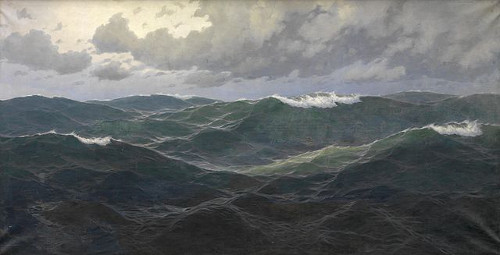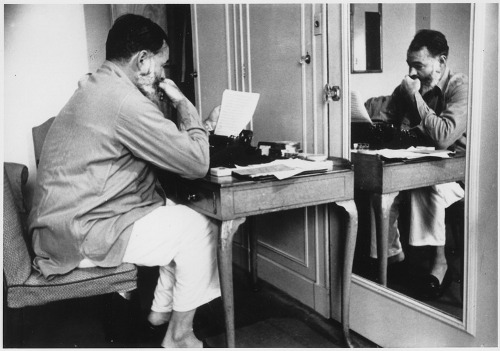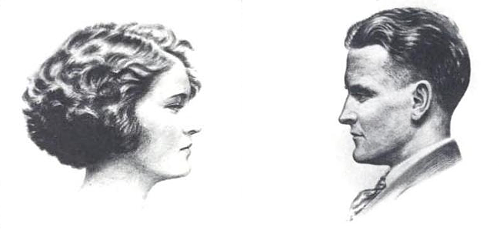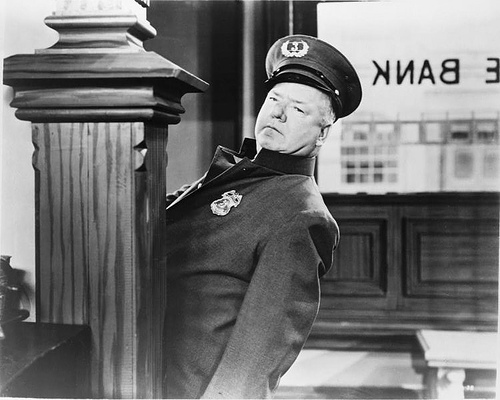
“They are ill discoverers that think there is no land, when they can see nothing but sea.” — Francis Bacon

“They are ill discoverers that think there is no land, when they can see nothing but sea.” — Francis Bacon

“I make a list of titles after I’ve finished the story or the book — sometimes as many as a hundred. Then I start eliminating them, sometimes all of them.” — Ernest Hemingway
“The title comes afterwards, usually with considerable difficulty. … A working title often changes.” — Heinrich Böll
“I have never been a title man. I don’t give a damn what it is called. I would call it [East of Eden] Valley to the Sea, which is a quotation from absolutely nothing but has two great words and a direction.” — John Steinbeck
“Titles as a rule do not matter much. Very good authors break down when it comes to the effort of choosing a title.” — D.H. Lawrence
“When I need a title I’ll usually reread the poetry of Hart Crane. I take a copy of Crane’s work with me when I travel. A phrase will catch my eye and seem right for what I’m writing. But there’s no system to it.” — Tennessee Williams
“I have a peculiar idea about titles. They should never be obviously provocative, nor say anything about murder. They should be rather indirect and neutral, but the form of words should be a little unusual. … As to publishers, I wonder if they know anything about titles.” — Raymond Chandler

The mayor of Talkeetna, Alaska, is a cat named Stubbs.
Local merchant Lauri Stec discovered him in her parking lot in 1997 and dubbed him Stubbs because he lacked a tail; he was named honorary mayor of the 900-resident town shortly afterward, and Stec’s general store is now his mayoral office.
“All throughout the day I have to take care of the mayor,” Stec’s employee Skye Farrar told CNN. “He’s very demanding. He meowed and meowed and meowed and demanded to be picked up and put on the counter. And he demanded to be taken away from the tourists. Then he had his long afternoon nap.”
He may require special treatment, but his constituents have been largely pleased with his 17-year reign. “He doesn’t raise our taxes,” Stec said. “We have no sales tax. He doesn’t interfere with business. He’s honest.”
Marvin Minsky invented this machine at Bell Labs in 1952:
Arthur C. Clarke wrote, “It sits on Claude Shannon’s desk driving people mad.”
In 1959, as he prepared the seventh edition of his Textbook of Pediatrics, Waldo E. Nelson enlisted his family to help compile the index. Nelson would call out items from each page and his wife and three children would write them down on index cards.
Only after the book appeared did he notice this entry:
Birds, for the, 1-1413
It was removed in the next edition. The culprit, Nelson’s daughter Ann, later married pediatrician Richard E. Behrman — after he promised never to ask her to help him write a textbook.

redamancy
n. the act of loving in return
Zelda to Scott Fitzgerald, spring 1919 or 1920:
I look down the tracks and see you coming – and out of every haze & mist your darling rumpled trousers are hurrying to me – Without you, dearest dearest I couldn’t see or hear or feel or think – or live – I love you so and I’m never in all our lives going to let us be apart another night. It’s like begging for mercy of a storm or killing Beauty or growing old, without you. I want to kiss you so – and in the back where your dear hair starts and your chest – I love you – and I can’t tell you how much – To think that I’ll die without your knowing – Goofo, you’ve got to try to feel how much I do – how inanimate I am when you’re gone – I can’t even hate these damnable people – Nobodys got any right to live but us – and they’re dirtying up our world and I can’t hate them because I want you so – Come Quick – Come Quick to me – I could never do without you if you hated me and were covered with sores like a leper – if you ran away with another woman and starved me and beat me – I still would want you I know –
Lover, Lover, Darling –
Your Wife

When John Barrymore was on his deathbed in 1942, he received a wire from W.C. Fields.
It said YOU CAN’T DO THIS TO ME.
“In all the proof that has reached me, windrow has been spelled window. If, in the bound book, windrow still appears as window, then neither rain nor hail nor gloom of night nor fleets of riot squads will prevent me from assassinating the man who is responsible. If the coward hides behind my finding, I shall step into Scribner’s and merely shoot up the place Southern style.” — American author Gordon Dorrance (1890-1957), note to his publishers
“By the way, would you convey my compliments to the purist who reads your proofs and tell him or her that I write in a sort of broken-down patois which is something like the way a Swiss-waiter talks, and that when I split an infinitive, God damn it, I split it so it will remain split, and when I interrupt the velvety smoothness of my more or less literate syntax with a few sudden words of barroom vernacular, this is done with the eyes wide open and the mind relaxed and attentive. The method may not be perfect, but it is all I have.” — Raymond Chandler, to the editor of The Atlantic Monthly
A publisher once took the liberty of editing an introduction that Mark Twain had contributed to a book on Joan of Arc. Twain returned a commentary on the edits. Some highlights:
The full list is in his autobiography. “It cost me something to restrain myself and say these smooth and half-flattering things to this immeasurable idiot,” Twain wrote, “but I did it and have never regretted it. For it is higher and nobler to be kind to even a shad like him than just. If we should deal out justice only, in this world, who would escape?”
Letter from Lewis Carroll to Adelaide Paine, March 8, 1880:
My dear Ada, — (Isn’t that your short name? ‘Adelaide’ is all very well, but you see when one’s dreadfully busy one hasn’t time to write such long words — particularly when it takes one half an hour to remember how to spell it — and even then one has to go and get a dictionary to see if one has spelt it right, and of course the dictionary is in another room, at the top of a high bookcase — where it has been for months and months, and has got all covered with dust — so one has to get a duster first of all, and nearly choke oneself in dusting it — and when one has made out at last which is dictionary and which is dust, even then there’s the job of remembering which end of the alphabet ‘A’ comes — for one feels pretty certain it isn’t in the middle — then one has to go and wash one’s hands before turning over the leaves — for they’ve got so thick with dust one hardly knows them by sight — and, as likely as not, the soap is lost, and the jug is empty, and there’s no towel, and one has to spend hours and hours in finding things — and perhaps after all one has to go off to the shop to buy a new cake of soap — so, with all this bother, I hope you won’t mind my writing it short and saying, ‘My dear Ada’).
You said in your last letter that you would like a likeness of me; so here it is, and I hope you will like it. I won’t forget to call the next time but one I’m in Wallington.
Your very affectionate friend,
Lewis Carroll